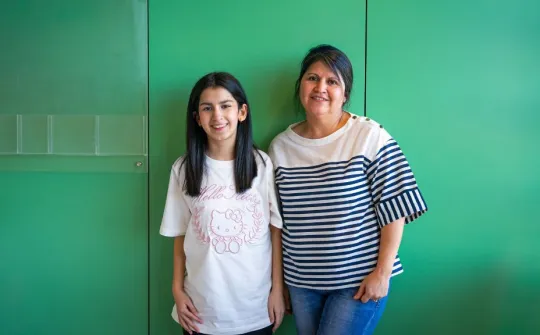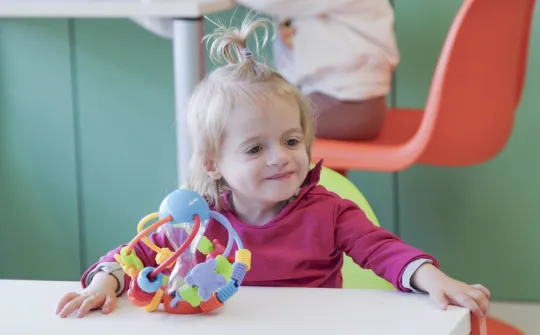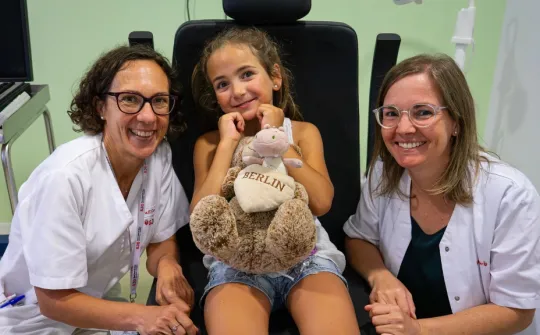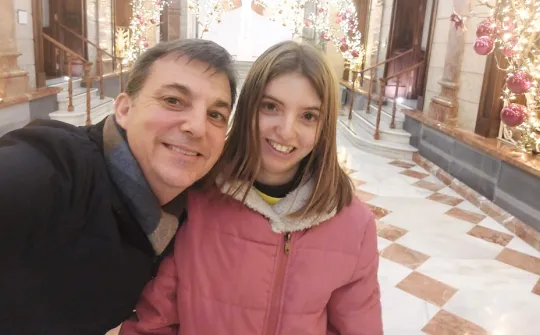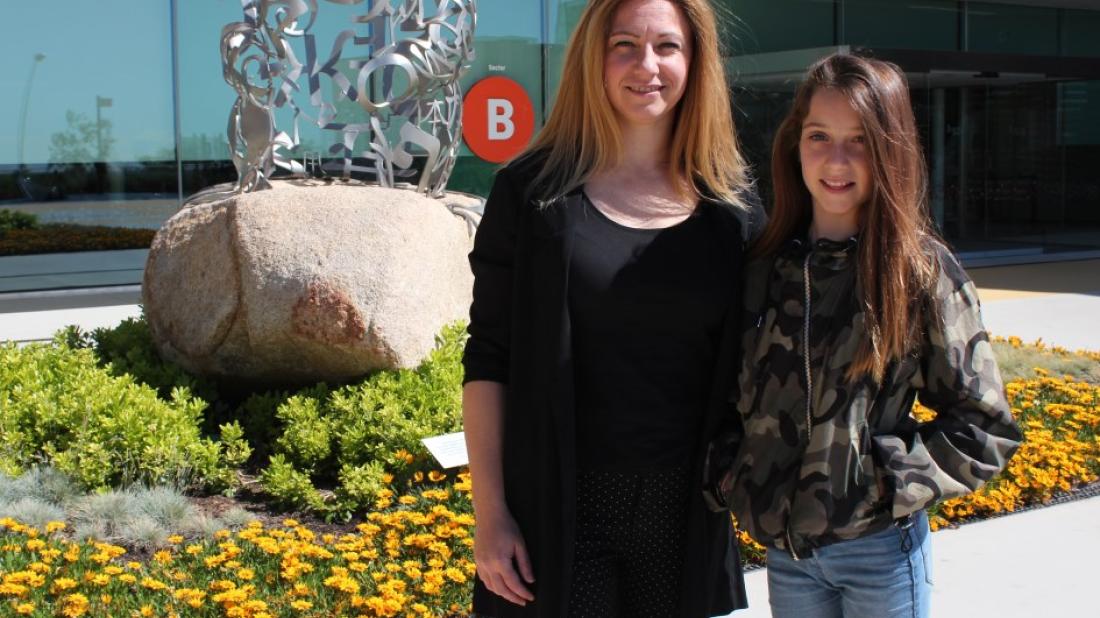
A Surgical Department patient describes how she overcame an oesophageal burn after several phases of treatment at SJD Barcelona Children’s Hospital
Naia’s life changed when she was just six years old. After a summer afternoon spent playing, the little girl asked for a glass of water at an establishment that accidentally gave her a glass of dishwasher polishing liquid. Naia immediately felt sick with an intense burning sensation in her throat and began to vomit incoerciblebly: she had an oesophageal chemical burn after swallowing the caustic product.
Naia received urgent care at the closest hospital on the same day and was later admitted to SJD Barcelona Children’s Hospital, where she spent more than two weeks as she stabilised. A few days after being admitted to the hospital, the child start showing symptoms again, including dysphagia (difficulty swallowing) and difficulty breathing. The poisoning that she had now gotten over had caused an oesophageal stenosis: the tube from the mouth to the stomach had narrowed as a reaction, and this made it difficult for Naia to swallow, as well as causing an agonising sensation of suffocation.
The initial treatment for oesophageal stenosis
Over the next few months, the solution to Naia’s problem was progressive oesophageal dilation performed on the child every two or three weeks in the Gastroenterology Department. The oesophageal dilation helped to relieve the girl’s symptoms and was considered the best initial treatment. However, it is difficult to recover from stenosis due to chemicals and the problem kept reappearing more and more frequently.
During one of the frequent dilations the patient underwent, her oesophagus was punctured, requiring an emergency change in therapy. First, a gastrostomy (insertion of a feeding tube through the abdomen) to feed her, since she could no longer eat by mouth. Naia needed to gain weight to be able to undergo the necessary treatment; the child only weighed 17 kilos at 8 years old due to the stenosis and her consequent difficulties eating.
“The hardest thing for me was the fact that treatments meant I couldn’t go on school trips or go to school festivals. Not being able to eat like the rest of the kids at birthday parties also got me down” says Naia, while snacking on a sandwich, as she describes the period of time when she received dilation treatment and the subsequent gastrostomy. Susana, the patient’s mother, explains that the treatment also made Naia anxious and nervous because she was afraid that she would again suffer the sensation of suffocation that she had experienced before.
Oesophageal replacement as a final solution
Finally, Doctor Xavier Tarrado, Head of the Surgery Department at SJD Barcelona Children’s Hospital, presented the solution that the family believed to be the optimal one for Naia: an oesophageal replacement with the colon. This specific technique (esophagocoloplasty) entails using a piece of the patient’s colon to substitute the damaged part of the oesophagus, which is first removed. This surgery is complicated and risky. “Even though we were afraid, the best thing to do in this case was to operate on Naia. It was this solution or live with a gastrostomy for the rest of her life,” the mother explained.
One of the main difficulties of the intervention was the removal of the damaged oesophagus, especially after having suffered a perforation. The surgery was completed successfully and, despite some complications in the post-operative process, Naia progressed favourably during her admission after surgery in the ICU and with the application of respiratory physical therapy.
Naia is now 12 years old. She attends school and most visits to the hospital are now for monitoring through endoscopies. Even though she will have to continue with monitoring and follow-up until she is an adult, Naia is optimistic. “I feel OK now. The bad times are behind me and I’m sure that everything will continue to go well in the future”, she concludes.
